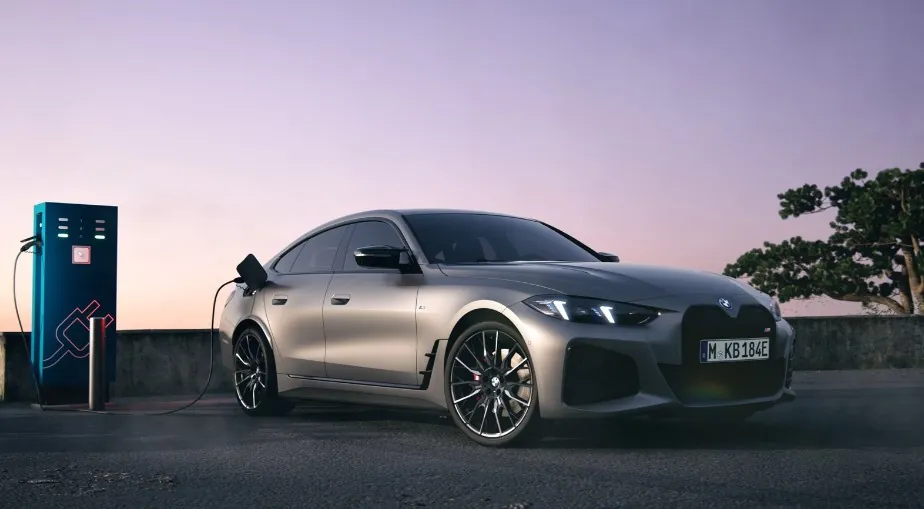
Share Post:
Japanese Domestic Market (JDM) refers to Japan’s home market for vehicles and vehicle parts. This term has become synonymous with a unique style and approach to automotive design and culture. JDM vehicles often showcase innovative technologies and designs, tailored to the specific tastes and needs of the Japanese market. This has led to a distinct automotive culture, revered and emulated worldwide.
In Japan, car owners prioritize innovation over long-term ownership, driving manufacturers to constantly evolve and introduce new technologies. For example, the 2003 Honda Inspire was the first to feature Honda’s Variable Cylinder Management, a technology not initially available in its North American counterpart, the Honda Accord V6. This focus on innovation results in a dynamic and ever-evolving automotive landscape.
Similarly, the integration of advanced technologies is not limited to mainstream models; it extends to high-performance vehicles as well, like the Sport Evo Six, which showcases a blend of cutting-edge technology and dynamic performance.
Table of Contents
ToggleJDM’s Global Influence
JDM cars have grown in popularity beyond Japan, especially since the late 1990s. Car enthusiasts around the world, from North America to Europe and Asia, are drawn to JDM cars for their unique characteristics and performance. Brands like Honda, Subaru, Toyota, Mazda, and Nissan are particularly popular. This global appeal is not just limited to cars; JDM motorcycles and commercial vehicles also have a significant following.
The influence of JDM style extends to the modification and tuning culture. Enthusiasts often seek to emulate the performance and aesthetics of JDM vehicles, leading to a vibrant aftermarket scene. This global appreciation of JDM style speaks to the unique appeal and quality of Japanese automotive design.
JDM Vehicles: Distinct Features and Innovations

Unique Characteristics
JDM vehicles often differ significantly from their export counterparts. These differences can be in terms of engine specifications, body styles, and interior features. For instance, JDM cars may have more powerful engines or unique body kits that are not available in other markets. This exclusivity adds to the allure of JDM cars for enthusiasts outside Japan.
The focus on innovation in the Japanese market means that JDM cars often feature cutting-edge technology. This includes advanced safety features, performance enhancements, and unique design elements. These innovations are not only a testament to the prowess of Japanese engineering but also contribute to the distinct identity of JDM vehicles.
The Evolution of Design
JDM design has evolved significantly over the years, influenced by both technological advancements and changing consumer preferences. Early JDM cars were known for their compactness and efficiency, a response to Japan’s dense urban environments and stringent emission standards. Over time, the design philosophy has expanded to include a greater emphasis on performance and aesthetics.
This evolution is evident in the sleek designs, advanced aerodynamics, and performance-oriented features of modern JDM cars. The blend of functionality and style is a hallmark of JDM design, making these vehicles not just modes of transportation but also expressions of personal style and technological achievement.
The Role of Aftermarket Modifications

Aftermarket modifications play a crucial role in JDM culture. Enthusiasts often modify their vehicles to enhance performance, aesthetics, or both. This can include engine upgrades, suspension modifications, custom bodywork, and interior enhancements. The aftermarket scene is vibrant and diverse, reflecting the personal tastes and preferences of JDM enthusiasts.
The availability of a wide range of aftermarket parts and accessories allows for extensive customization. This has led to the creation of a community that values creativity and individual expression through their vehicles. Car meets, shows, and races are common, where enthusiasts gather to showcase their modified vehicles and share their passion for JDM culture.
Impact on Global Car Culture
JDM has had a significant impact on car culture worldwide. It has influenced automotive design trends, popularized certain vehicle models, and contributed to the growth of the global aftermarket industry. The appeal of JDM cars and the culture surrounding them has led to a greater appreciation of Japanese automotive engineering and design principles.
This influence is evident in the popularity of JDM-inspired car meets and clubs around the world. It has also led to the integration of JDM styling cues and performance characteristics in vehicles from other markets. The global car culture has been enriched by the diversity and innovation that JDM brings to the table, making it a vital and dynamic part of the automotive world.
Iconic JDM Vehicles and Their Specifications
Nissan Skyline GT-R (R34)
The Nissan Skyline GT-R (R34) is a legend in the JDM world, known for its advanced technology and performance. It was produced between 1999 and 2002 and is highly sought after by car enthusiasts.
- Engine: 2.6L twin-turbocharged inline-6
- Power: 276 hp (206 kW) @ 6,800 rpm
- Torque: 289 lb-ft (392 Nm) @ 4,400 rpm
- Transmission: 6-speed manual
- Drivetrain: All-wheel drive
- Weight: 1,540 kg
- 0-60 mph: 4.9 seconds
- Top Speed: Electronically limited to 155 mph (250 km/h)
Toyota Supra (A80)
The Toyota Supra (A80), particularly the fourth generation, is another iconic JDM vehicle, celebrated for its robust engine and tuning potential.
- Engine: 3.0L twin-turbocharged inline-6
- Power: Up to 320 hp (239 kW) @ 5,600 rpm (in the Turbo model)
- Torque: 315 lb-ft (427 Nm) @ 4,000 rpm
- Transmission: 6-speed manual or 4-speed automatic
- Drivetrain: Rear-wheel drive
- Weight: 1,570 kg
- 0-60 mph: 4.6 seconds (Turbo model)
- Top Speed: Approximately 155 mph (250 km/h, electronically limited)
Honda NSX (First Generation)
The Honda NSX, known as the Acura NSX in North America, broke new ground as a high-performance sports car that was both reliable and usable daily.
- Engine: 3.0L V6 (later models had a 3.2L V6)
- Power: 270 hp (201 kW) @ 7,100 rpm (3.0L)
- Torque: 210 lb-ft (285 Nm) @ 5,300 rpm
- Transmission: 5-speed manual or 4-speed automatic
- Drivetrain: Rear-wheel drive
- Weight: 1,370 kg
- 0-60 mph: 5.7 seconds
- Top Speed: 168 mph (270 km/h)
FAQ
Can JDM vehicles be legally imported to other countries?
Yes, JDM vehicles can be imported, but regulations vary by country. In the US, for example, imported vehicles must be 25 years old to bypass certain safety and emission standards.
What makes JDM engines unique?
JDM engines often have higher performance specs due to Japan’s less restrictive emission standards. They may also feature unique tuning and technology not found in international models.
Are JDM cars more expensive than their non-JDM counterparts?
It depends. Some JDM models are highly sought after and can be more expensive due to their rarity and unique features. However, others might be comparably priced or even cheaper.
How does the JDM tuning scene differ from other car cultures?
The JDM tuning scene often focuses on both aesthetic and performance enhancements, with a strong emphasis on maintaining brand integrity and a clean, functional style.
What is the significance of the ‘Shakotan’ style in JDM?
‘Shakotan’ refers to a style of vehicle modification in Japan characterized by extremely lowered ride height and often, bold body modifications. It’s a distinct subculture within the JDM scene.
Are there any JDM electric vehicles (EVs)?
Yes, Japanese manufacturers have started producing EVs, though the JDM style is traditionally associated with combustion engines. These EVs incorporate JDM aesthetics and technology.
How do Japanese car meets differ from those in other countries?
Japanese car meets often emphasize respect, orderliness, and a shared passion for automotive culture. They are typically more focused on the appreciation of the cars rather than competitive events.
Final Words
JDM style is more than just a way of building cars; it’s a comprehensive approach to automotive culture that combines innovation, performance, and aesthetics. It’s a testament to the creativity and engineering prowess of the Japanese automotive industry and continues to influence car enthusiasts worldwide.
Related Posts:











